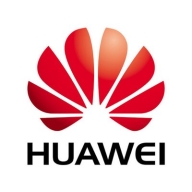

Huawei FusionCube Hyper-Converged Infrastructure and Azure Stack HCI are competing within enterprise-level IT infrastructure solutions. Azure Stack HCI appears to have the upper hand with superior feature integration, especially for enterprises invested in Microsoft technologies.
Features: Huawei FusionCube supports flexibility and scalability across platforms, allowing seamless integration with existing environments. It simplifies management by integrating network, storage, and compute functions, appealing to organizations avoiding complex setups. Azure Stack HCI excels with robust Microsoft ecosystem integration, advanced security, and seamless Azure cloud services compatibility, addressing comprehensive enterprise needs including Azure Kubernetes Service for running containerized microservices.
Room for Improvement: Huawei FusionCube could enhance integration with leading cloud services beyond existing platforms and improve the user interface for easier management. Expanding advanced analytics capabilities would also add value. Azure Stack HCI can streamline the deployment process to match its feature set. Enhancing cost-effectiveness for medium enterprises and providing more customization options during initial setup would be beneficial.
Ease of Deployment and Customer Service: Huawei FusionCube delivers efficient deployment with strong customer support, ensuring a smooth installation experience. Azure Stack HCI involves a more complex setup due to its extensive features; however, its comprehensive documentation and Microsoft's service network offer significant support throughout the process.
Pricing and ROI: Huawei FusionCube often presents a lower upfront cost, attracting budget-conscious enterprises and offering a solid ROI given its competitive pricing. Azure Stack HCI requires a higher initial investment but is considered worthwhile due to its advanced functionalities and effective cloud service integration, promising greater long-term ROI.


Azure Stack HCI efficiently integrates software-defined networking and Azure Kubernetes Service, offering a streamlined hybrid setup for VM management while maintaining top performance.
Azure Stack HCI enhances data center operations with high-end processors and storage, optimal Kubernetes support, and integration with Azure Arc and Azure Site Recovery. High application density in four-node configurations improves both time and infrastructure efficiency. Despite its strengths, the platform can improve in areas like software-defined networking, operational management, and simplifying deployments, which currently rely on PowerShell. Users often desire better training and integration with Microsoft Azure Portal, along with multi-cluster capabilities and storage architecture enhancements. Improvements in Hyper V virtualization are also needed to match competitors like VMware.
What are the key features of Azure Stack HCI?In sectors like government, Azure Stack HCI is crucial for running secure on-premise services with selectable Azure features to ensure data privacy. Businesses leverage the platform for VM creation, management, and monitoring through Windows Center, alongside Kubernetes production environments. Connectivity with Azure allows for smoother cloud transitions, appreciated for its dashboard manageability and substantial network capacity.
Huawei FusionCube is a hyper-converged infrastructure, which consists of computing, storage, network, virtualization, and management systems.
We monitor all HCI reviews to prevent fraudulent reviews and keep review quality high. We do not post reviews by company employees or direct competitors. We validate each review for authenticity via cross-reference with LinkedIn, and personal follow-up with the reviewer when necessary.